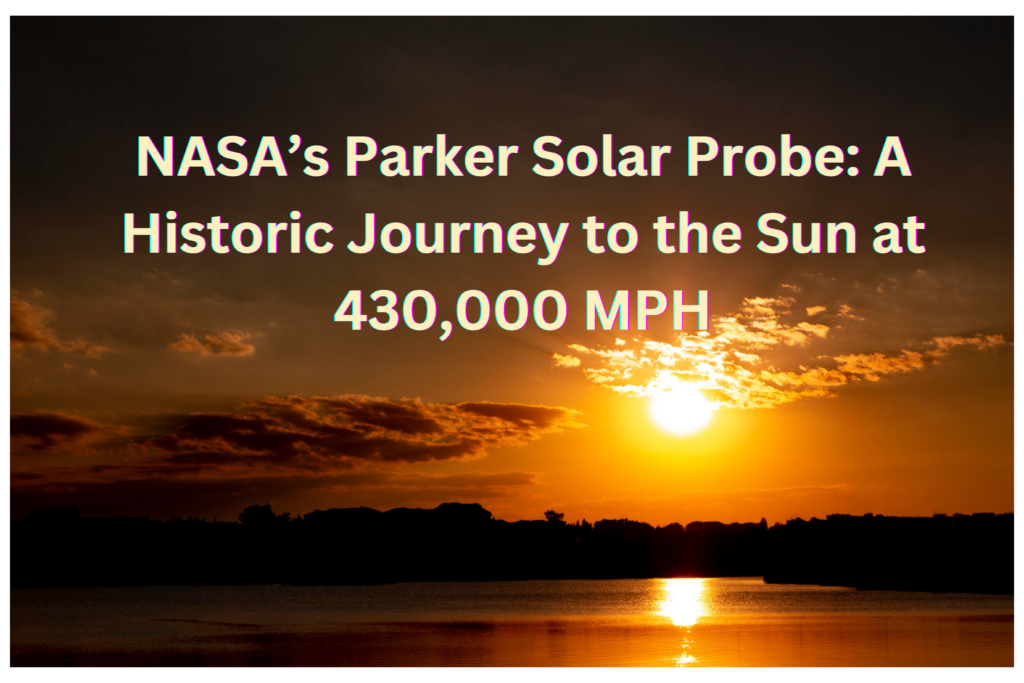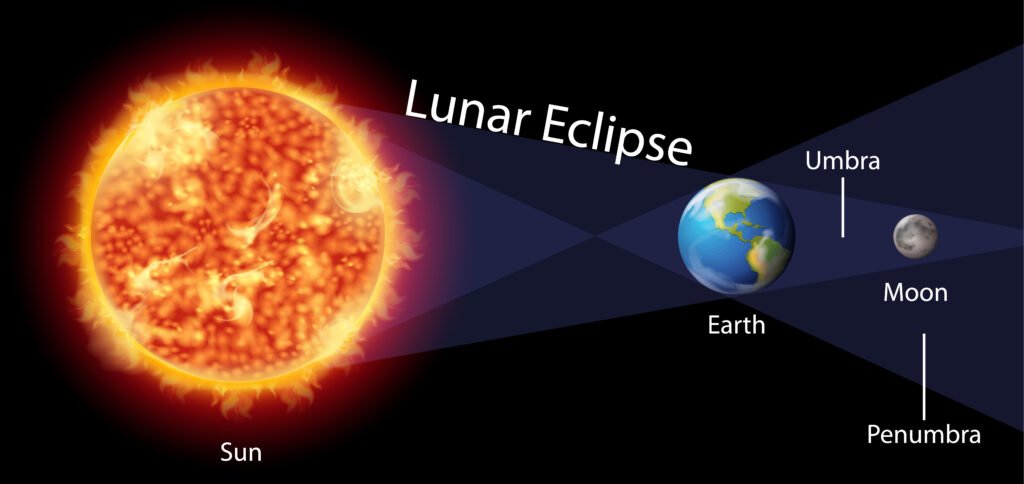NASA’s Parker Solar Probe has set a historic milestone by becoming the fastest human-made object, traveling at an astonishing speed of 430,000 miles per hour. Its unprecedented mission to explore the Sun’s mysteries is not only a technological marvel but also a testament to human curiosity and innovation.
The Closest Approach of NASA’s Parker Solar Probe to the Sun

The Parker Solar Probe is on a mission to venture closer to the Sun than ever. While our understanding of the Sun has grown over centuries, this spacecraft aims to provide previously unimaginable insights.
On December 25, 2024, the probe approached the Sun at an incredibly close distance of 3.8 million miles from its surface, setting a record for proximity. This distance, equivalent to 6.2 million kilometers, is a groundbreaking achievement in space exploration.
Unveiling the Sun’s Secrets

Designed to endure the Sun’s scorching heat and immense radiation, the Parker Solar Probe is equipped with advanced thermal shielding. Temperatures near the Sun reach as high as 1,400 degrees Celsius, but the spacecraft’s innovative carbon-composite heat shield keeps its instruments operational.
At this distance, the Sun emits extreme levels of heat and radiation, creating a hostile environment. The probe’s mission includes studying solar winds, magnetic fields, and the Sun’s corona, which plays a crucial role in space weather.
Why Study the Sun?
The Sun influences every aspect of life on Earth. Understanding its behavior can help us predict solar storms, which can disrupt communication systems, power grids, and satellites. Moreover, studying the Sun’s outer atmosphere, or corona, can reveal why it is significantly hotter than the Sun’s surface—an enduring scientific mystery.
NASA’s goal is to decode these enigmas, enhancing our knowledge of the solar system and beyond.
The Probe’s Historic Mission
Launched in 2018, the Parker Solar Probe has been inching closer to the Sun with each orbit. Its journey has taken it through the Sun’s outer atmosphere, where it collects critical data.
On its 16th orbit, the probe reached the closest point yet, known as the perihelion. This achievement was accompanied by the fastest speed ever recorded for a spacecraft—430,000 miles per hour. At this speed, the probe can travel from London to New York in just 30 seconds!
Engineering Marvel: Surviving the Sun’s Heat
The Parker Solar Probe’s thermal protection system is a masterpiece of engineering. Its 4.5-inch-thick carbon-composite heat shield can withstand temperatures up to 1,400 degrees Celsius while keeping its scientific instruments safe.
The spacecraft is also equipped with advanced cooling systems to prevent overheating. Its ability to operate in such extreme conditions is a breakthrough in space technology.
Scientific Discoveries So Far
The data collected by the Parker Solar Probe has already led to significant discoveries. For instance, it has provided insights into solar winds—streams of charged particles that emanate from the Sun and impact Earth’s magnetic field.
Additionally, the probe has captured high-resolution images and data on solar flares, which are bursts of energy from the Sun’s surface. These findings are helping scientists understand the Sun’s behavior and its impact on the solar system.
Challenges of the Mission
Operating so close to the Sun presents numerous challenges. The extreme heat and radiation require the spacecraft to maintain precise positioning to protect its instruments. Communication with Earth also becomes difficult due to the intense solar interference.
Despite these obstacles, the Parker Solar Probe performs beyond expectations, setting new records with each orbit.
Future Prospects
The mission is far from over. The Parker Solar Probe will continue to orbit the Sun, gradually decreasing its distance with each pass. By the end of its mission in 2025, the probe is expected to reach as close as 3.83 million miles to the Sun’s surface.
The data collected will pave the way for future space missions and deepen our understanding of the Sun’s role in the universe.
Conclusion
The Parker Solar Probe’s journey to the Sun is a historic feat in space exploration. Traveling at 430,000 miles per hour and enduring the Sun’s extreme conditions, the probe is uncovering secrets that will benefit humanity for generations.
As the probe continues its mission, it reminds us of the limitless potential of human ingenuity and our unyielding quest to explore the unknown.
Focus Keywords: Parker Solar Probe, NASA, fastest spacecraft, Sun’s corona, solar winds, space exploration, Sun’s mysteries.


